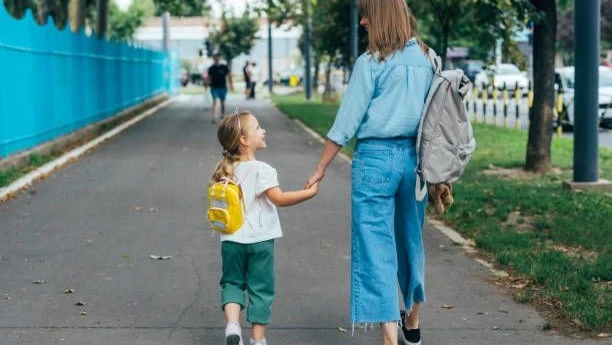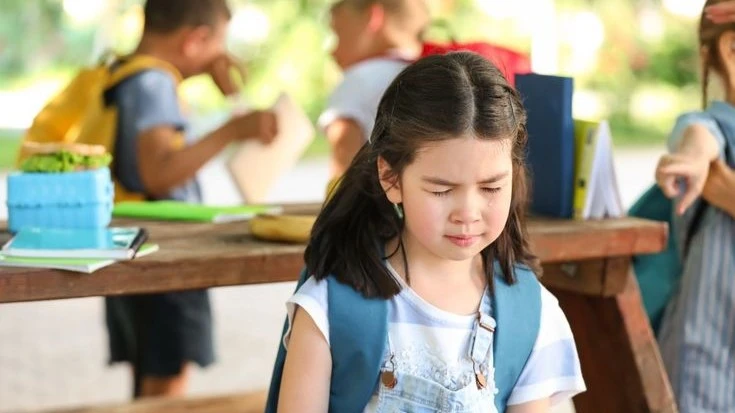“The first five years have so much to do with how the next 80 turn out.” — Bill Gates
Did you know that over 90% of a child’s brain develops before the age of 5? That hit me hard when I first read it. Preschool isn’t just some babysitting pit stop before kindergarten. It’s the real deal.
And learning how to prepare your child for preschool can seriously shape their emotional and social confidence for years to come.
I remember the first time I had to drop my daughter off. She clung to my leg like it was the end of the world. I cried more than she did. But after a few bumpy mornings, we figured it out. And now? She runs into class like she owns the place.
This post is your casual, tried-and-tested guide to easing that transition. No sugar-coating. Just real talk, honest lessons, and a bunch of things I wish I knew before our first day.
How to Prepare Your Child for Preschool
Look, how to prepare your child for preschool isn’t a one-size-fits-all thing. Some kids march in like they’ve been doing it forever. Others act like the world is ending. Mine? Somewhere in between. And that’s totally okay.
Build a Morning Routine
Start by building a morning routine. I messed this up at first. I’d wake her up late, rush breakfast, forget her backpack… chaos. So I made a chart with pictures – toothbrush, clothes, breakfast, shoes. Kids love pictures. It became our morning rhythm, and it saved us from so many meltdowns. Consistency was key, even on weekends.
Establishing a consistent morning routine is crucial. For working moms, these time management tips can help streamline mornings and reduce stress.
Visit the Preschool Beforehand
Visit the preschool together before the first day. Walk around the playground, say hi to the teacher, let them explore. It makes the place feel familiar. It helped my daughter stop calling it “that scary building.” The more they see it, the less mysterious it becomes. Even just peeking into the classroom windows made a big difference.
Talk About What to Expect
Talk about what to expect, in simple words. “You’ll play with toys. You’ll color. There will be snack time.” Keep it light and fun. Oh, and read preschool books together. We loved Llama Llama Misses Mama and The Kissing Hand. Helped her big time. Storybooks are magical that way—they say what we’re struggling to explain.
Encourage Independence
Teach them some independence, like using the bathroom alone, putting on shoes, and asking for help. I used to do everything for her (guilty!), but it backfired. Letting them try, even if it’s messy, boosts their confidence. Start small. Zipping up a coat or putting away toys goes a long way.
Practice Social Skills
Social stuff matters too. Try playdates or library story times. It gets them used to sharing and waiting their turn — stuff they’ll need a lot in preschool. We even practiced “what to say when you want to play” at home, and role-played snack-time chat.
Social stuff matters too. Try playdates or library story times. For more ideas on enhancing your child’s social interactions, read our post on Building Social Skills Through Play.

Use a Visual Countdown
One thing that worked magic for us? A visual countdown calendar. Each day, she’d put a sticker and see how close the “big day” was. It built excitement instead of fear. We’d count down together during bedtime and talk about the fun things ahead.
Stay Positive and Supportive
And don’t forget: your attitude rubs off. If you’re nervous, they’ll feel it. Be upbeat (even if you’re faking it).
I kept reminding myself, “She’s ready. I’m ready. We can do this.”
Keep repeating this mantra: how to prepare your child for preschool isn’t just about packing the right backpack. It’s about building routines, independence, and confidence. Every little habit adds up.
Signs Your Child Is Ready for Preschool
Preschool readiness includes emotional, physical, and social development—not just knowing colors or numbers. A child who is ready should be able to follow simple directions like “put on your shoes” or “bring your cup.”
Being able to use the toilet, feed themselves, and express the desire to do tasks alone are also good indicators. These skills help children function more independently in a group setting.
Other signs include trying to share, listening to a group story, and playing alongside or with other children. These behaviors show that a child is starting to adjust to social environments like preschool.
Using a preschool readiness checklist can help families keep track of what to work on. Practicing daily routines, basic self-help, and simple social skills at home is an effective way to prepare.
If you are looking for how to prepare your child for pre school, observing these behaviors is a helpful place to start.
Building a Preschool Routine
Mornings were difficult for both me and my child. Things felt disorganized and stressful until we created a simple routine. Now, she gets up, brushes her teeth, gets dressed, and packs her bag with little help.
We used a basic preschool routine chart with pictures. This helped her understand what to do next and made the process more predictable. She enjoyed checking off each step with a crayon, which made it feel like a game.
We began practicing this preschool morning routine about two weeks before the first day. Wake-up time was set for 7:00 a.m., breakfast at 7:30, and we aimed to leave by 8:00. These small steps helped reduce stress and created a calm start to the day.
Evening routines were also important. We followed a pattern of dinner, bath, a bedtime story, and sleep. Turning off all screens after 6:00 p.m. made a noticeable difference.
Creating a clear and consistent routine is a useful part of how to prepare your child for pre school. It helps build confidence and makes transitions smoother.

Preschool Checklist for Parents
Many parents buy too many items when preparing for preschool. Expensive lunchboxes and personalized backpacks are often not necessary.
The most useful items are a strong backpack, a labeled change of clothes, a comfort toy, a leak-proof water bottle, and a small snack container.
Label every item with a permanent marker or waterproof name label. This helps reduce the chance of items getting lost.
Make sure the bag is light enough for your child to carry comfortably.
It can help to keep a checklist and review it every week. For example, we checked the backpack every Sunday evening to make sure it had everything needed.
Supplies are part of how to prepare your child for pre school. Focus on simple and necessary items.
The Week Before School Starts
Seven days before the big day, we did a school countdown. Each day, we crossed off a number and did one small thing to prep.
Day 7: Visited the preschool. Met the teacher. Explored the playground. Huge confidence boost.
Day 6: Practiced our morning routine. With real clothes, real shoes.
Day 5: Talked about what she could expect—snack time, circle time, playtime. Nothing scary.
Day 4: Together, we packed her bag. She picked out her favorite snack, and we double-checked that everything had her name on it.
Day 3: A short cartoon about a child’s first day gave her a relatable glimpse into what to expect. Watching it really helped.
Day 2: Saying goodbye at the door became a fun practice game. We smiled, waved, and reminded each other that we’d see each other soon.
Day 1: Breakfast turned special with pancakes and a bedtime story about growing up. It shifted her nerves into something to look forward to.
This countdown helped so much. It made school feel exciting, not scary.
So yeah, if you’re wondering how to prepare your child for pre school, the week before matters. Big time.
What to Expect on the First Day of Preschool
Some Kids having Trouble Adjusting to Preschool
Some children may cry for a few days when starting preschool, while others need more time to adjust. If your child continues to show strong emotions like crying daily, refusing to separate, or appearing fearful every morning—these are signs they may be struggling. It’s common. And yes, it’s stressful for both child and parent.

Research published in the journal Psychoneuroendocrinology indicates that transitions like starting preschool can activate the brain’s stress response, particularly in young children with limited coping skills. While some distress is normal, consistent support and predictable routines can help reduce cortisol levels and ease separation anxiety over time.
First Day Memories
I remember our first preschool morning clearly. I overpacked her snack box, labeled everything in sight, and still felt like I forgot something. She brought her favorite plush and a small family photo, which comforted her more than I expected.
Drop-off was the hardest part. I wanted to stay until she settled, but the teacher suggested a quick and confident goodbye. I told her, “I’ll be back after snack and playtime,” kissed her cheek, and walked out—nervous and shaky. But within five minutes, she had calmed down. Most kids do.
We ended that big day with ice cream and extra hugs. She didn’t share much, just shrugged and said, “Nothing.” Later I learned she had made a friend and painted a dragon. That moment reminded me: preparing your child for preschool continues beyond that first morning. It’s in the check-ins, the small chats, and the steady routines afterward.
Conclusion
If you take away one thing, let it be this: how to prepare your child for preschool isn’t about being perfect. It’s about being present, patient, and proactive. It’s about showing up, every day, even when it’s hard.
Preschool is a huge leap. For them and for us. But it’s also an amazing one. Build the routines, visit the school, talk about feelings, and trust that your child is capable. Your consistency creates their confidence.
Every child is different, and that’s okay. Follow their lead. Listen to your gut. And remember: you’re not alone in this.
Drop your own preschool prep tips in the comments. What worked for you? What flopped?
Let’s help each other through it.









